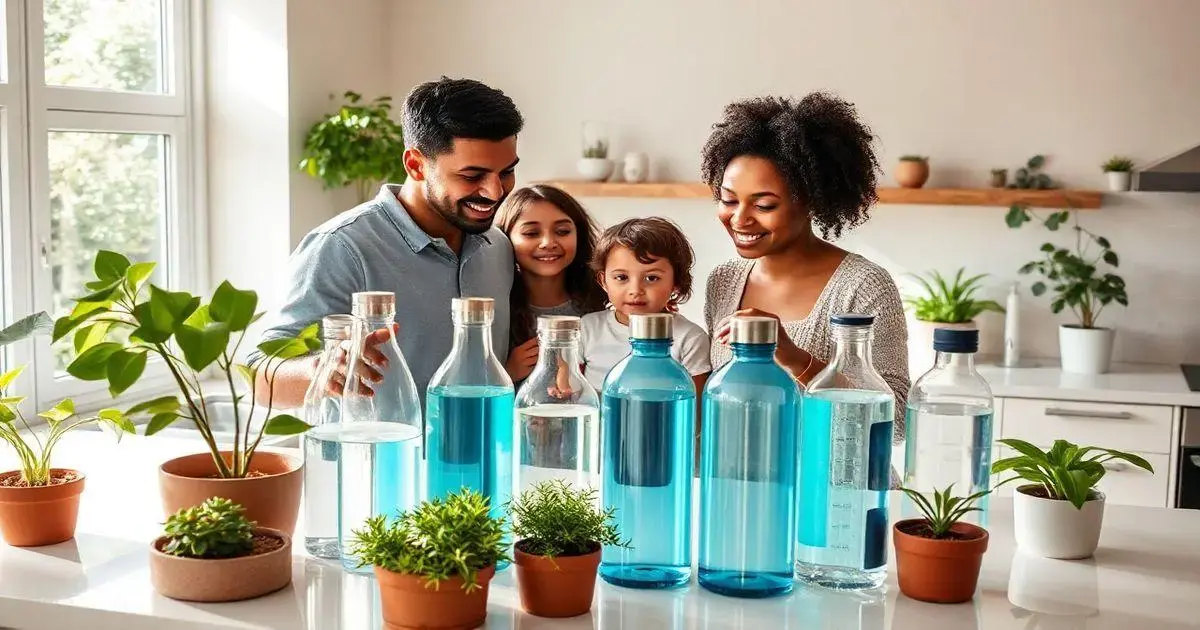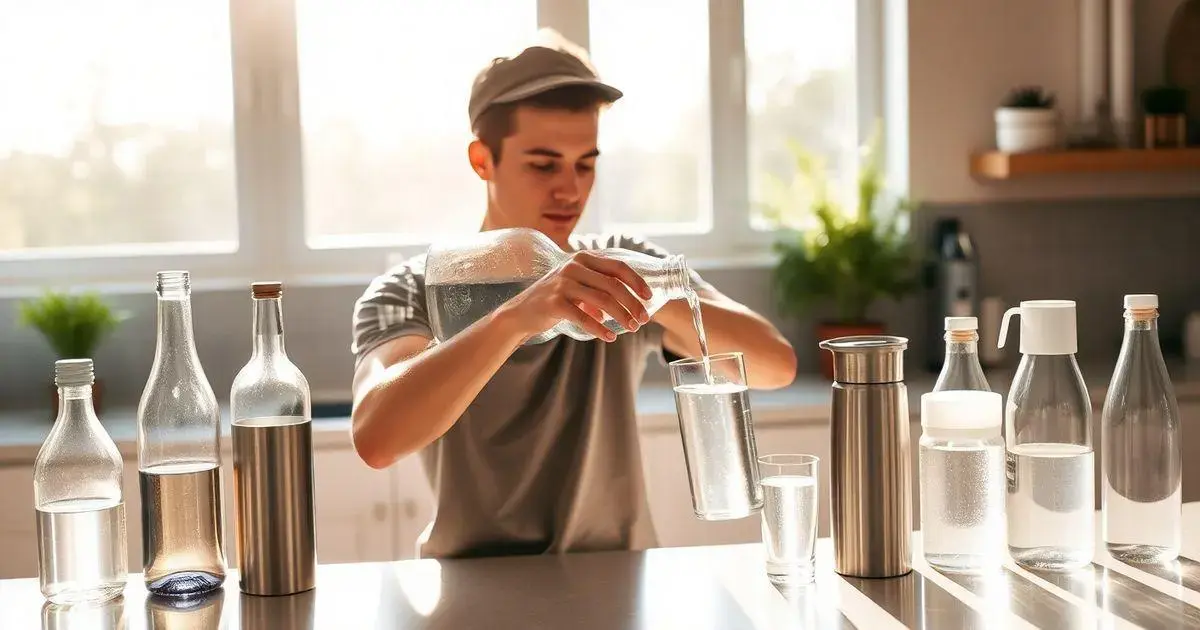Is Your Water Container BPA Free?
Do you know if the water container you use every day is free from harmful chemicals like BPA? Understanding the materials of your water container is crucial for your health and well-being. Let’s dive into the importance of using BPA-free water containers to safeguard yourself and your loved ones.

The Dangers of BPA in Water Containers
Introduction to BPA Contamination
Bisphenol A (BPA) is a chemical used in many plastics, including water containers, that can leach into the liquid it holds. Research has linked BPA exposure to various health risks, such as hormonal imbalances, developmental issues, and increased cancer risk. Understanding the dangers of BPA in water containers is crucial for safeguarding your health and well-being.
How BPA Enters Water
BPA contamination in water containers can occur through numerous avenues, including exposure to high temperatures, long-term storage, or scratches on the container surface. When plastic containers containing BPA are heated or exposed to sunlight, the chemical can leach into the water, especially if the container is old or worn out. These factors increase the likelihood of BPA entering the water you consume.
Health Impacts of BPA Exposure
Studies have shown a correlation between BPA exposure and various health complications, such as reproductive issues, neurological disorders, and cardiovascular problems. Prolonged exposure to BPA through contaminated water containers can have detrimental effects on your overall health. Staying informed about these risks can help you make better choices when selecting water containers.
Guidelines to Reduce BPA Exposure
To minimize your exposure to BPA from water containers, opt for BPA-free alternatives, use glass or stainless steel containers, avoid microwaving plastic, and discard old or damaged containers. By following these guidelines, you can significantly reduce the risks associated with BPA contamination in water containers.
Steps to Ensure BPA-Free Water Consumption
Check for “BPA-Free” labels on water containers, research the materials used in the manufacturing process, look for certifications from regulatory bodies, and consider investing in high-quality brands known for producing BPA-free products. These steps will help you make informed decisions and prioritize your health when choosing water containers.

The Importance of BPA-Free Water Containers
In today’s health-conscious world, the choice of water containers goes beyond mere convenience. Opting for BPA-free water containers is crucial for safeguarding your health and the environment. Bisphenol-A (BPA) is a harmful chemical found in many plastic containers, and when it leaches into your water, it can have detrimental effects on your well-being. By choosing BPA-free water containers, you can reduce your exposure to this toxic substance and enjoy pure, uncontaminated water.
Water container BPA free options are specifically designed to provide a safe and sustainable way to store your water. These containers are manufactured without the use of BPA or other harmful chemicals, ensuring that your water remains pure and untainted. By investing in BPA-free water containers, you are making a conscious choice to prioritize your health and well-being.
Additionally, opting for BPA-free water containers contributes to environmental sustainability. Traditional plastic containers that contain BPA can have a significant negative impact on the environment, contributing to pollution and harming wildlife. By switching to BPA-free options, you are taking a step towards a more eco-friendly lifestyle and reducing your carbon footprint.
When it comes to ensuring the safety of your drinking water, choosing BPA-free containers is not just a preference but a necessity. With the increasing awareness of the harmful effects of BPA, more and more people are making the switch to BPA-free water containers to protect themselves and the planet.
How to Safely Store Water in BPA-Free Containers
Storing water in BPA-free containers involves a few simple steps to ensure the purity and safety of your drinking water. Begin by selecting a high-quality BPA-free water container that meets your needs in terms of size and durability. Once you have chosen the container, wash it thoroughly with mild soap and water to remove any residue from the manufacturing process.
After cleaning the container, fill it with fresh, clean water from a reliable source. Make sure to leave some space at the top to allow for expansion when freezing (if applicable) or in case of temperature changes. Secure the lid tightly to prevent any contaminants from entering the water.
It is essential to store the water container in a cool, dark place away from direct sunlight and heat sources. This will help maintain the water’s freshness and prevent the growth of harmful bacteria or algae. Additionally, regularly check the container for any signs of damage or wear and tear, and replace it if necessary to ensure the safety of your stored water.
By following these simple steps, you can confidently store your water in BPA-free containers, ensuring that it remains safe, pure, and ready to drink whenever you need it.
Exploring Eco-Friendly Options for BPA-Free Water Containers
As the demand for eco-friendly products continues to rise, manufacturers are introducing a wide range of sustainable options for BPA-free water containers. From glass to stainless steel and silicone, there are plenty of alternatives to traditional plastic containers that are both BPA-free and environmentally friendly.
Glass water containers are a popular choice for those looking to avoid plastic and seek a more sustainable option. Glass is non-toxic, non-leaching, and highly durable, making it an excellent choice for storing water safely. Stainless steel containers are also a great eco-friendly option, as they are long-lasting, easy to clean, and free from harmful chemicals like BPA.
Silicone water containers offer a flexible and lightweight alternative to traditional plastic containers. Silicone is a non-toxic material that is safe for storing both hot and cold beverages, making it a versatile choice for eco-conscious consumers. By exploring these eco-friendly options for BPA-free water containers, you can make a positive impact on your health and the environment.
When choosing an eco-friendly water container, consider factors such as material, design, and sustainability practices of the manufacturer. By selecting a high-quality, BPA-free container that aligns with your values and preferences, you can enjoy safe, clean drinking water while reducing your environmental impact.
Conclusion
In summary, understanding the dangers of BPA contamination in water containers is essential for your health and safety. BPA is a harmful chemical commonly found in plastics that can leach into your drinking water, leading to serious health risks such as hormonal imbalances and increased cancer risk. By becoming knowledgeable about how BPA enters water and its potential health impacts, you are taking an important step towards protecting yourself and your loved ones.
To mitigate these risks, it is vital to switch to BPA-free water containers and adhere to safe storage practices. Opting for high-quality alternatives made from materials like glass, stainless steel, or silicone can ensure that your water remains uncontaminated. Furthermore, following guidelines like avoiding exposure to heat and regularly inspecting containers will assist in preserving the safety and purity of your water.
Choosing BPA-free water containers is not only a personal health decision but also an environmentally responsible one. By making conscious choices, you contribute to reducing plastic pollution and promoting sustainability. Take charge of your health today by selecting safe water storage options and embracing a lifestyle that prioritizes both your well-being and the health of our planet.
